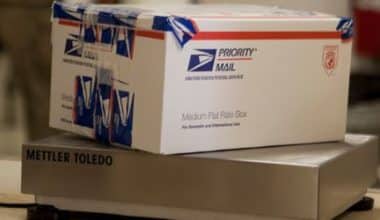Direct deposit has progressed from a perk to the norm for the vast majority of employees. However, just because the direct deposit is common does not mean that everyone is well-versed in all of its features. As a result, it’s a good idea to be prepared for what to expect and how to make the most of it.
Here is all the information you need to know about using direct deposit.
What Is Direct Bank Deposit?
Direct deposit is a completely automated method of handling transactions. When a direct deposit is received, the payer sends an electronic payment that is automatically deposited into the payee’s checking account. For the money to be transferred, there is no need for a physical check or for either party to visit the bank.
According to the American Payroll Association’s 2020 Getting Paid in America Survey, this payment method has become very popular in recent years, with nearly 90% of U.S. workers receiving their paychecks via direct deposit. Consequently, direct deposit is more convenient for employees and employers, as it eliminates the need to print and distribute paper checks.
How Does Direct Deposit Work?
Direct deposit is a payment method that transfers money electronically from one bank account to another, eliminating the need for physical checks. For direct deposit transfers, banks use the Automated Clearing House (ACH) network, which allows them to coordinate payments with other financial institutions.
Furthermore, when you use direct deposit to receive funds or make a payment, your checking or savings account automatically increases or decreases to reflect the transaction as soon as the payment is processed. Direct deposit is most commonly associated with payroll checks, but it is also available for other types of financial transfers, such as:
#1. Bill payments:
Signing up for online bill payments or setting up ACH payments with the organization you owe can usually save you the trouble of using checks and postage.
#2. Payments to independent contractors:
You or your company can pay independent contractors through direct deposit using your current payroll provider or bookkeeping software.
#3. Social Security Benefits:
The Social Security Administration makes it possible for you to get your payments electronically.
#4. Tax refunds or payments:
You can set up direct deposit for your tax refund or payment by providing the government with your bank account information when you file your tax return. For refunds, you can even split your payment into multiple bank accounts to automatically save a portion of it.
What Is An Example Of A Direct Deposit?
Here’s an example to help you understand how direct deposit works:
On the 25th of each month, a company must make payroll payments. To make the process more convenient and timely for the company and its employees, the company collects the banking information of its employees to set up direct deposits.
Ideally, a company sends payroll instructions to the bank on the 24th, and the bank sends the information to the Automated Clearing House (ACH)—assuming the process takes one business day. The ACH will organize payment instructions and ensure that payments are made to the proper banks and accounts.
Following that, once the ACH directs the payment to the employees’ banks, the banks receive the payment instructions and process the payment. Typically, the process takes one to five business days. Following payment settlement, the funds received will be credited to the employees’ accounts by the respective banks.
Furthermore, the amount being transferred, the banks (transfers and payment processing between certain banks take longer than others), whether the direct deposit is in-country or to a foreign bank account, and so on, will all affect the time or length of the process. Employers can make early direct deposits to expedite payment processing.
How Can I Make A Direct Deposit?
If you’d like to set up direct deposit, follow these simple steps:
#1. Determine the payment process of the other party
Whether you’re coordinating direct deposit with your employer, a government institution, or a vendor, each organization has its own set of forms and processes. Begin by contacting someone from the organization. If it’s your employer, you’ll most likely speak with someone in human resources. Inquire with them about the requirements for setting up direct deposit, and then gather the necessary materials.
#2. Provide the required information
Though the processes and forms differ from one organization to the next, the information required of you is usually the same. Typically, the organization will request the following information:
- Name of your bank
- The location of your bank
- The routing number of your bank
- Your bank account number
- SWIFT/BIC codes for international transfers.
Keep in mind that your account and routing numbers are private. Keep them safe and only share them with institutions and individuals you trust.
#3. Submit a voided check
A check that has been voided is no longer usable for payment or withdrawal. During the direct deposit setup process, some organizations may request a voided check to verify the information you’ve provided. Simply write the word “void” on both sides of a check to make it void. Try to write as broadly and legibly as possible.
How Long Does A Direct Deposit Take?
Direct deposits are one of the quickest methods of money transfer, and the funds are usually available the next business day. Payroll and government payments, such as Social Security benefits and tax refunds, are typically available immediately.
Furthermore, check payments can take a long time to reach the payee due to postage and the need for banks to clear the funds. Delays may also occur if the check is misplaced or stolen. Direct deposits, unlike checks, do not require a clearing period, so you can spend or withdraw the funds immediately.
Terms Used in Direct Deposit Transaction
#1. Direct Deposit Payment:
Direct deposit payment is the term used to describe the electronic deposit of money into a bank account as opposed to a physical, paper check. Utilizing an electronic network that enables deposits to be made between banks is necessary for direct deposit.
#2. Direct Deposit Form:
A direct deposit form is an authorization form that workers must complete in order to give their employer permission to deposit money directly into their bank accounts. The norm for most businesses is to pay employees via direct deposit.
#3. Bank America Direct Deposit Form:
The Bank of America direct deposit form is a formal document that collects all the data needed by an employer to make a direct deposit into an employee’s account.
#4. Chase Bank Direct Deposit Form:
Chase Bank direct deposit form is a typical legal document or form that is used to give your employer and Chase Bank the necessary permission to set up a Direct Deposit of funds into a Chase Bank Account of your choice for when the employer is ready to pay you. Both you and your employer will have complete discretion over the amount and timing of these Deposits.
5 Advantages Of Using Direct Deposit
There are numerous benefits to using direct deposit, whether you are the sender or the recipient of the funds, including:
#1. Transactions are completed more quickly.
Direct deposit, in many cases, allows for faster receipt of funds than physical checks. This is especially true if you have your checks mailed to you regularly. There’s no need to wait for the check to arrive in your mailbox, or to transport it to the bank, deposit it, and wait for it to clear.
#2. Safe payment methods
Many of the common threats that can compromise a physical check are eliminated with digital payments. There’s no fear of having your check stolen or falsified. Instead, the funds are transferred from one bank account to another seamlessly and securely.
#3. More convenient record-keeping
When using direct deposit, everyone will get a record of the transfer in their transaction history. It allows for easy tracking of funds when necessary. As a result, you can skip saving your pay stubs or writing down the details of your bank activity, and it’s certainly not necessary to organize your financial paperwork in bulky folders or filing cabinets.
#4. Resource Effectiveness
In terms of resources, direct deposit is more efficient than physical checks. You don’t have to buy checks, mail them to you, or go to the bank to cash them. Furthermore, receiving electronic payments is usually free, and sending funds via ACH can be less expensive than other options.
#5. Convenience
Direct deposit allows for stress-free and convenient transfers, with payments automatically added to your account regardless of whether you can make it to the bank.
Disadvantages of Direct Deposits
#1. Cybersecurity risks
Cybersecurity is a major risk associated with direct deposits. Payments are vulnerable to cybercrime because they are made electronically or online. However, banks and other financial institutions, on the other hand, take precautions to ensure data security and privacy at all times.
#2. You must have a bank account.
Another disadvantage of direct deposits is that they cannot be used by people who do not have bank accounts. Therefore, if the recipient does not have a bank account, an alternative payment method must be found and agreed upon.
Can I Do Direct Deposit Internationally?
Direct deposits made from outside the United States will be subject to a conversion fee. Direct deposit is a convenient way to transfer money without having to go to the bank.
Additionally, you can conduct your international money transfer through the bank where you have a checking or savings account, or you can open an account with a company that specializes in sending money, such as Western Union, MoneyGram, PayPal, or Paysend.
Note that international bank transfers take one to two days on average, but can take up to five days depending on the currency.
Is Direct Deposit A Wire Transfer?
There are a few key points to consider when deciding between direct deposit and wire transfer. The first consideration is transaction speed. Although direct deposits are quick and should get you your money within one working day, wire transfers are faster and should get you your money in a few hours at most, if not instantly.
Furthermore, you need to fill out a direct deposit form for direct deposit transactions but you don’t need to fill in any written details for wire transfers as they are done digitally.
Another critical factor is currency. Direct deposits can only be used to receive payment in the currency of the local banking system. For example, if you live in England, you can only receive payment in GBP, whereas those living in Canada can only receive payment in Canadian Dollar. Clients who use wire transfers, on the other hand, have the option of receiving payment in a currency other than the local currency.
Finally, it’s important to understand that wire transfers and direct deposits serve distinct purposes. Direct deposits are typically used for ongoing payments such as salary/payroll, whereas wire transfers are used for one-time (usually large) payments to another person or institution. As a result, the situations in which you’ll use these transfer methods may vary greatly.
Is Paypal A Direct Deposit?
If you live in the United States and have a PayPal Cash Plus account, you can sign up for direct deposit payments. When you log into your PayPal account, you’ll find your direct deposit information in your profile. Customers who have a PayPal Cash Card are automatically enrolled in direct deposits.
Furthermore, direct deposits to PayPal are only available for incoming payments and cannot be used for outgoing payments.
Finally, Direct Deposit is only available to PayPal customers who have a PayPal Cash Card and are auto-enrolled for Direct Deposit.
Can I Do Direct Deposit Online?
Direct deposit is a completely automated method of handling transactions. When a direct deposit is received, the payer sends an electronic payment that is automatically deposited into the payee’s checking account. So for the money to transfer, there is no need for a physical check or for either party to visit the bank.
BUSINESS BANK ACCOUNT: What Do I Need To Open One (Best 2023 Practices)
BEST BANK INTEREST RATES for Savings 2023 (Updated)
RETAIL BANKING: Definition Types and How It Works
RELEASE MANAGEMENT: Meaning, Process, Duties, Salary, & Software






